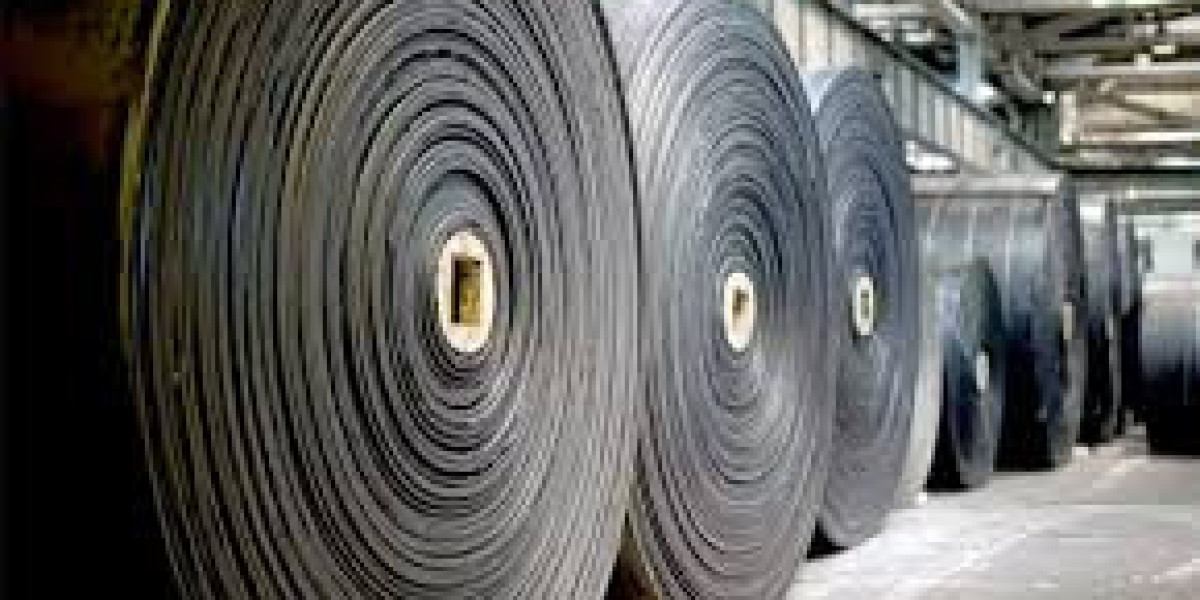The industrial rubber market is poised for continued expansion in production through 2033, driven by deepening industrialization, infrastructure projects, electrification of mobility, and growing emphasis on sustainability. Forecasts for industrial rubber output reflect both traditional demand from automotive and construction segments, and rising production of high-performance, recycled, and bio‑based elastomer products designed for future‑oriented industries.
1. Global Production Outlook
Industrial rubber production is expected to grow steadily over the 2025–2033 period, with overall volumes expanding at a mid‑single‑digit compound annual growth rate (CAGR). Traditional synthetic rubbers such as SBR, NBR, EPDM, and FKM will remain primary contributors, though production of renewable and recycled alternatives is projected to accelerate rapidly—achieving double-digit growth in some regions as circular economy initiatives gain traction.
2. Key Growth Drivers
Industrial and Infrastructure Build-Out
Large-scale infrastructure and industrial development across Asia‑Pacific, Latin America, Middle East, and Africa are fueling steady production increases in hoses, belts, seals, mats, and vibration components.
Automotive Electrification
With electric vehicle (EV) adoption accelerating globally, specialized elastomers—such as high‑temperature seals, dielectric insulators, and battery‑grade hoses—are seeing rising production demands. These require more advanced compounds and tighter quality controls, lifting production value per unit.
Energy & Oil & Gas Expansion
Growth in both traditional and renewable energy sectors is raising demand for high‑performance rubber products for pipeline seals, industrial hoses, and vibration mounts. Production is shifting toward materials that withstand corrosion, high pressure, and temperature variability.
Sustainable Materials Production
Production volumes of recycled rubber and bio-based compounds are growing fastest, as manufacturers adopt devulcanization, rubber reclaiming, and alternative feedstocks (guayule, soybean, dandelion). These methods are scaling rapidly to meet corporate sustainability objectives and green procurement criteria.
3. Regional Production Landscape
Asia-Pacific
The primary production hub for industrial rubber, Asia‑Pacific—led by China, India, Indonesia, and Thailand—accounts for over half of global output. Access to natural rubber plantations, raw materials, and low-cost processing infrastructure makes the region a magnet for volume-driven manufacturing.
North America & Europe
Production in developed markets emphasizes high-value, specialty elastomers. These regions focus on electric mobility components, engineered seals, and precision compound goods—often tied to regulatory and safety standards in sectors like aerospace, pharmaceuticals, and energy.
Latin America, Middle East & Africa
While production in these zones is smaller in volume, emerging industrial and energy projects are boosting demand. Regional hubs are increasingly using local rubber capacity for hoses, seals, and sustainable compounds geared toward infrastructure and mining applications.
4. Product Segment Outlook
Synthetic Rubber Production (SBR, NBR, EPDM, FKM): Continues expanding at 3–5% CAGR, serving the bulk of industrial rubber demand in hoses, belts, seals, and mechanical goods.
Recycled and Reclaimed Rubber: Expected to grow at 7–10% CAGR, driven by devulcanization technologies and demand for eco‑friendly product lines.
Bio-based Rubber Production: Though currently small in share, it is projected to scale rapidly—potentially doubling output by 2033 as alternative feedstocks gain market acceptance.
Advanced Elastomer Products (e.g. high temp seals, smart mounts): Seen as premium lines with faster growth in revenue terms—even as volumes remain moderate, reflecting higher value per unit.
5. Technology Trends Affecting Production
Automated Mixing & Extrusion: Ensures consistent material quality across batches and lowers defect rates. Digital monitoring and robotics optimize production efficiency and improve yield.
Additive Manufacturing (3D Printing): Enables flexible, low-volume production of custom elastomer parts—especially useful for prototyping and specialized seals.
Manufacturing Execution Systems & Digital Twins: Allow engineers to test production scenarios virtually and implement just-in-time production across contract manufacturing lines.
Devulcanization Systems & Circular Facilities: These are enabling higher output of reclaimed rubber suited to industrial uses—boosting supply without new raw materials.
6. Supply-Demand Dynamics
While demand growth remains strong, especially in energy, EV, and industrial automation sectors, production may be constrained by raw material supply mismatches. Natural rubber production is forecast to grow more slowly, increasing reliance on synthetic or recycled alternatives. This supply-demand gap may accelerate investments in devulcanization and bio-based feedstocks to stabilize volume availability.
7. Industry Challenges
Raw Material Cost Volatility: Prices of oil-based feedstocks and natural rubber can swing based on commodity cycles or weather impacts, affecting production planning.
Regulatory Hurdles: Compliance with low-VOC, chemical safety, and traceability standards adds complexity and may slow production ramp-up in some regions.
Technology Barriers: Advanced automation and recycling systems require significant CapEx and skilled personnel, limiting adoption among smaller producers.
Scale Limitations: Additive manufacturing is still limited for mass production and suits niche or prototype segments rather than bulk output.
8. Strategic Recommendations for Stakeholders
Upgrade Plant Capabilities: Invest in automated mixing, digital control systems, and waste‑reduction process technologies to improve yield and consistency.
Diversify Elastomer Supply: Blend natural, synthetic, reclaimed, and bio-based rubber to balance cost, volume, and sustainability.
Focus on Premium Components: Prioritize output of high-margin rubber products such as EV seals, smart vibration mounts, and chemical-resistant hoses.
Develop Circular Infrastructure: Implement devulcanization and closed-loop recycling capabilities to reduce dependence on virgin feedstocks and increase reclaimed rubber production.
Regionally Align Production: Scale volume production in Asia-Pacific while maintaining specialty compound and R&D centers in North America and Europe.
Conclusion
Global production of industrial rubber is set to grow steadily through 2033—anchored by demand in infrastructure, electric vehicles, energy, and industrial automation. While traditional synthetic output remains foundational, the fastest-growing production lines will be in recycled, bio-based, and smart elastomer products. Producers investing in automation, sustainability, and regional expansion are best positioned to capitalize on evolving market dynamics and meet future demand more efficiently.







